
2. From Alpe du Villar-d'Arène to Le Casset
When you leave the shelter, the atmosphere is all there, with the surrounding peaks, true stone and rock giants and overwhelming scenery. At Col d'Arsine, the round trip to the lake is a chance to immerse yourself in the atmosphere of a glacier moraine before returning to the Alpine pastures and their pastoral cabins. The path descends gently into the valley, and you encounter all stages of vegetation. From the Alpine grass, the route gradually moves from a fine larch forest to the hay meadows and vegetable gardens in the village of Le Casset.
Description
- You arrive at the GR54. After a few loops, the footpath reaches the Col d'Arsine (2,348 m).
- The return trip to the Arsine glacier lake begins on the right. The path leaves the GR 54 and crosses the large frontal moraine of the Arsine glacier. From this rising land, shaped by the movement of glaciers, two large lakes at the foot of a corrie mark the end of the ascent (2,455 m). Retrace your steps as far as the GR 54.
- Through large blocks of rock, the path makes its way to a series of small lakes and the pastoral cabin (2,240 m).
- Follow the Petit Tabuc stream along the left bank. After a steep scree and a large number of small loops, you arrive at a small lake, La Douche (1,901 m).
- The path enters a larch forest. It soon turns into a forest track running along the right bank of the stream.
- At Pont du Clot du Gué (1,558 m) (signpost for the “Parc National des Ecrins”), the path runs along the left bank of the stream as far as the confluence with La Guisane at the entrance to the village of Le Casset (1,512 m).
- Departure : Alpe du Villar-d'Arène
- Arrival : Le Casset
- Towns crossed : Villar-d'Arêne and Le Monêtier-les-Bains
21 points of interest
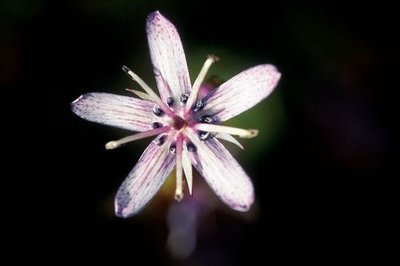
Swertie vivace - Bernard Nicollet - PNE  Flora
FloraFelwort
In early August, the felwort’s violet stars open in the sunshine. At the base of each of its five petals, two shiny pits full of nectar attract insects. A member of the gentian family, this beautiful flower is a perennial that survives the cold season with its persistent winter bud close to the ground, surrounded by a rosette of protecting leaves.
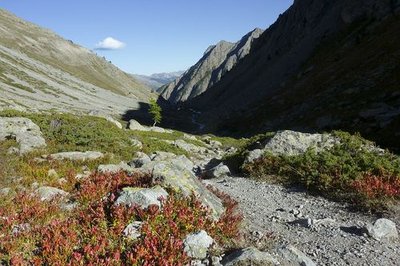
En descendant du col d'Arsine, sous les chalets du même nom. Vue plein est. - Cyril Coursier - PNE  Pass
PassArsine pass
The Arsine pass, is an important crossing point to visit on the GR54 Tour des Ecrins et de l'Oisans. It gives a remarkable viewpoint over the Angeaux massif. The pass is part of an old itinerary that was used instead of the crossing point by the Lautaret pass. It is also a crossing point between the Guisane and the Romanche area. This is an area that was mentioned as early as the Middle Ages as a place of conflict between the districts of Villar d'Arène and Monétier-les-Bains.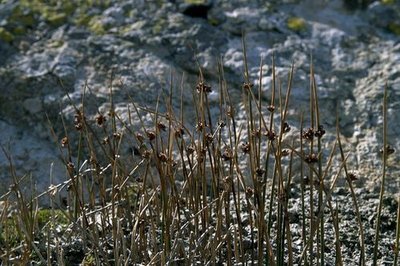
Jonc arctique - Bernard Nicollet - PNE  Flora
FloraArctic rush
Even though it is relatively common in some acidic marshland, the Arctic rush is nonetheless protected throughout the Rhône-Alpes and Provence-Alpes-Côte-d’Azur regions. It can be recognised because of its total absence of leaves and by the few blackish flowers in the upper third of the stalk. The flower tepals open at an obtuse angle and are a little shorter than the capsule.
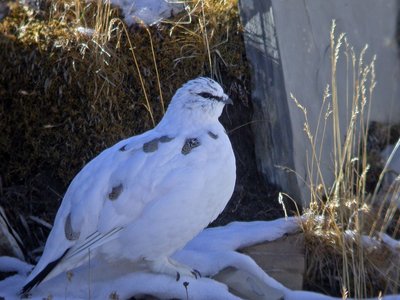
Le lagopède alpin en plumage d'hiver - PNE - Combrisson Damien  Fauna
FaunaRock ptarmigan
At five in the morning in the month of May, at an altitude of over 2,000 m, the sun rises over the fields of blueberry, which appear above the patches of snow. All of a sudden, a hoarse, almost metallic cry cuts through the peaceful dawn atmosphere: the rock ptarmigan is in the midst of its nuptial parade. Originating from the Arctic tundra, the rock ptarmigan, sometimes called the snow partridge, was to be found all over Europe during the ice ages, before its living space was limited to the mountains. Even today, it finds the conditions it needs to survive. The national Alpine parks have a great responsibility in conserving this species. The inventory carried out by the Haute-Romanche nature unit in 2005 showed there was a large core group of birds on the site.
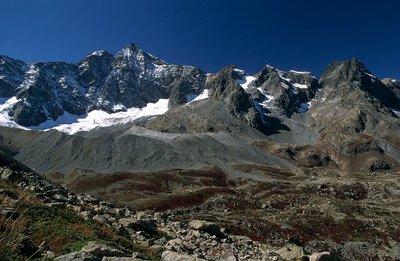
Anciennes moraines colonisées - PNE - Nicollet Bernard  Glacier
GlacierMoraines
The site of Arsine offers a complex moraine environment with a parade of ice margin flowers. The frontal moraine of the Arsine glacier is on a glacial vegetated rock complex that occupies about forty hectares at the bottom of the cirque. This complex is likely to have come about through a shifting of abandoned glacial deposits after permafrost was established. This means that the ground maintains a temperature of 0°C or less over several years. This phenomenon is likely to have taken place during the recent Dryas climatic cooling, that is to say 11 000 – 10 000 years BC.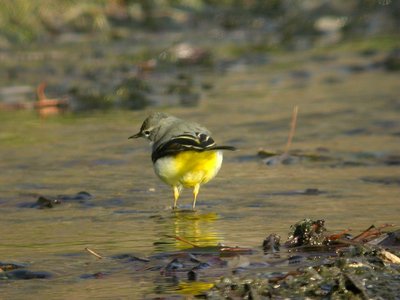
Bergeronnette des ruisseaux - PNE - Combrisson Damien  Fauna
FaunaAquatic diet
The grey wagtail is "hyperactive" and has a diet of flies, mosquitoes, dragonflies and all sorts of aquatic insect larvae. It hunts at the edge of the water, by jumping from stone to stone or hovers to catch its prey. It sometimes fishes for shellfish, molluscs, or even small fish to complete it meals. It does not leave the damp banks to build its nest either, and even looks for somewhere close to a waterfall or to flowing river.
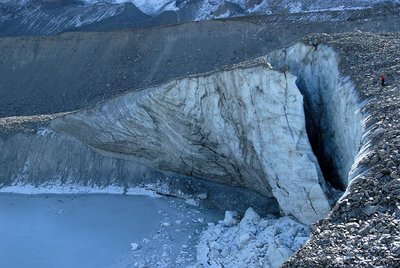
Détachement imminent d'un bloc du glacier - PNE - Masclaux Pierre  Glacier
GlacierIce calving
When the lake is frozen and the air temperature rises, the ice expands, provoking what is called the “song of the lake". The Lac Ouest is the last lake in the mountain range where it is still possible to see the fall of seracs (the front of the glacier) into the water, giving rise to this muffled noise.

 Glacier
GlacierThe melting Arsine glacier
Lake Arsine came to life in the 1950s after the Arsine glacier melted. Due to its rapid development, it was measured more accurately in 1969 and 1985, showing 800,000 m3 of water contained in a moraine that had been weakened by the ice inside it. Since it threatened to break, emergency work was undertaken the following spring to stop the rise in the level of the lake using a regulation channel dug across the frontal moraine. Almost 30 years later, the glacier site is still carefully monitored by Park employees. And the risk is now completely ruled out.
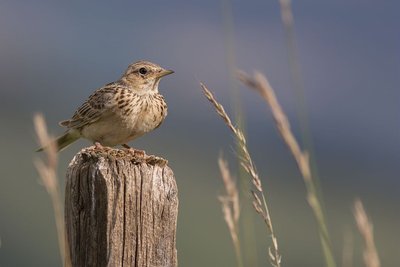
L’alouette des champs - PNE - Saulay Pascal  Fauna
FaunaSkylark
This bird is like a tightrope walker suspended in the sky, sounding out a long chorus of notes. Then, triangular wings back, and in a perfect spiral, the bird lands in the middle of the prairie. On the ground, it is difficult to see: its varying shades of brown means it is very well camouflaged. In its search for food, its movements, which are a succession of small sprints and sudden halts, enable it to spot possible predators.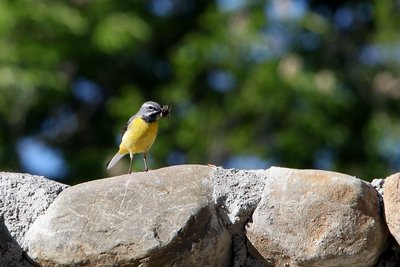
La bergeronnette des ruisseaux - PNE - Saulay Pascal  Fauna
FaunaGrey wagtail
The grey wagtail elegantly hops along the rocks at the riverside. They are found in mountain streams, but also near all waterways in the mountains, in the countryside or in towns, and even small high-altitude lakes. Like other wagtails, they continually wag their long black tails edged with white. They have yellow breasts like the western yellow wagtail, but their backs are ash grey. In the mating season, males proudly show off their black throats, making it easier to tell them apart from females, whose throats and breasts are partly white. Their pinkish claws are specific to the breed, since other wagtails’ claws are black.
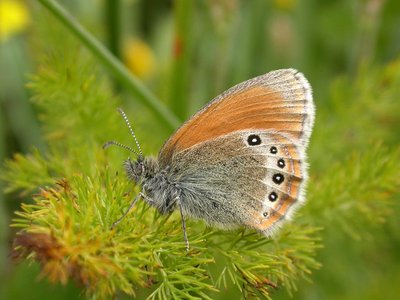
Satyrion (papillon de jour) - PNE - Delenatte Blandine  Fauna
FaunaButterflies and moths
Butterflies can be distinguished from moths by the shape of their antennae. You will also notice that when resting, the butterflies wings are vertically folded over the body for necessary discretion while the moth's cover them. The moorland clouded yellow butterfly has another unusual habit: as soon as it becomes too cold to fly, it settles and bends its side to the sun to absorb energy. It can even lean slightly, whereas others tend to fully, and dangerously spread themselves out.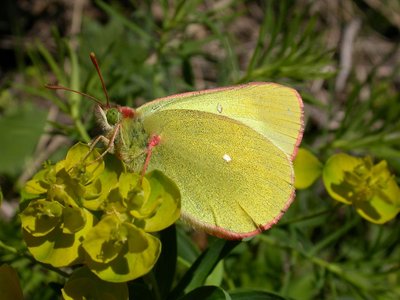
Solitaire mâle sur une euphorbe - PNE - Delenatte Blandine  Fauna
FaunaMoorland clouded yellow
The heath surrounded by heather and willows is the home of a population of unusual and protected butterflies: the moorland cloud yellow. Elsewhere, it lives in different environments, such as blueberry heaths and peatland, where the moorland clouded yellow is rare and hard to spot. It can be recognised by its yellow display delicately sprinkled with grey under the rear wings of the male, while the female of the species has adopted almost purely white wings. They both wear a simple pink border highlighting the edge of their wings, with a tiny white ocellus (eye) encircled with brown and a discrete grey crescent.
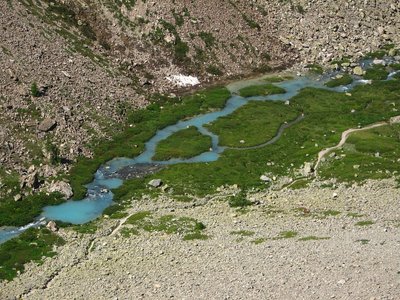
Eaux turquoises du Petit Tabuc - PNE - Coursier Cyril  Water
WaterWater colour in the meanders
The turquoise colour of the water that meanders from the Petit Tabuc stream gives a special character to this remarkable site. The valley is popular among photographers and artists for its photographic and pictorial quality.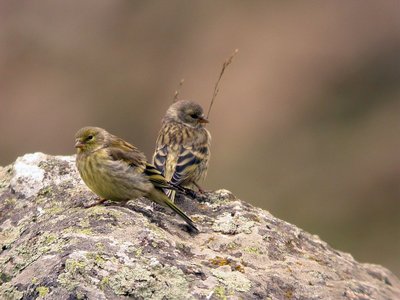
Deux venturons montagnards - PNE - Combrisson Damien  Fauna
FaunaAlpine citril finch
A small green-yellow-grey bird sways on a tall branch. Chet! The Alpine citril finch flies off to land on a scrap of threadbare grass. It looks like a small greenfinch, but the strident cry it makes during its short flight clearly sets it apart. Its head and breast flanks are a pretty blue-grey colour. Its yellow wing stripes can be easily seen. When flying over longer distances, its undulating flight is reminiscent of a goldfinch’s. And just like its cousin, the finch is sociable and moves about in small groups when exploring some sparse group of nettles or grass.
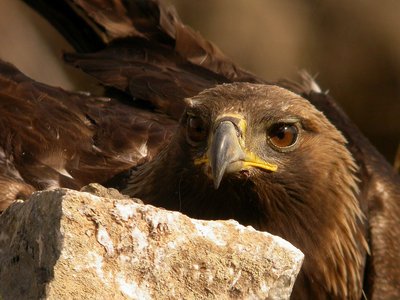
Aigle royal - PNE - Combrisson Damien  Fauna
FaunaGolden eagle, the Ecrins' mascot
The Petit Tabuc site is ideal for the golden eagle to nest. The golden eagle is amongst the protected species that are considered rare in Europe. The size of the populations that have been registered in the Ecrins massif, bestow a strong responsibility on the Park for conservation of the species. Counting takes place regularly since 1985 along with monitoring of reproduction, causes of disturbance and mortality.
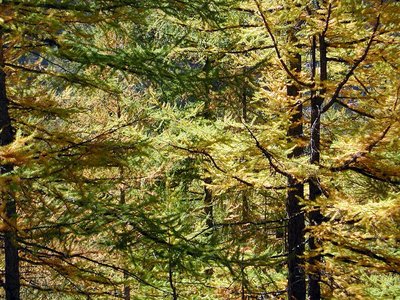
Mélezin - PNE - Quellier Hélène  Flora
FloraLarch
The larch is the only European resinous tree to lose its needles in winter. Its wood is red-brown. It stands out in the landscape with its leaves ranging from a soft green colour in spring to gold in autumn. Its pink flowers attract naturalists and photographers in the spring. The larch tree is a coloniser of mountain slopes. Although it is at home in the harsh conditions of the mountainside, it cannot bear competition from other trees. The Petit Tabuc site is a fine example of its colonising capacity, even though it is regularly hit by avalanches.
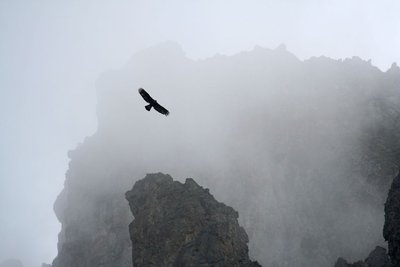
Aigle royal dans la brume - PNE - Telmon Jean-Philippe  Fauna
FaunaA flying predator
The eagle is the archetypal predator. Everything about it suggests strength and daring. Its appearance, of course, with its impressive expression highlighted by the prominent brow ridge, but above all its fearsome weapons: rapid flight, which can be adapted to even the most acrobatic situations, and sharp, powerful talons. Its keen eyesight helps it detect its prey, from the marmot to the young chamois, ptarmigans and hares. In winter, it often takes its food from the dead bodies of animals, helping towards the natural cleansing of nature.
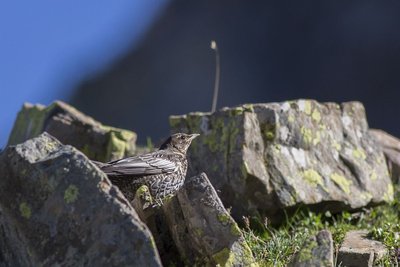
Jeune merle à plastron - PNE - Saulay Pascal  Fauna
FaunaRing ouzel
In the pastures covered with larch or 'bush", a cry of alarm followed the start of a song resounds. A blackbird? Yes, but more specifically a ring ouzel. This shy, swift mountain blackbird lives on the fringe of the larch, scots pine, spruce or Swiss pine forests between 1000 and 2500 m in altitude. The ring ouzel is a migratory bird that spends winter in Spain or North Africa before coming back to the mountains around March.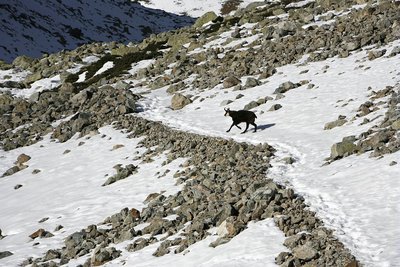
Chamois mâle au moment du rut dans le vallon du petit Tabuc, à proximité du Mônetier-les-bains - Cyril Coursier - PNE  Fauna
FaunaChamois
Rupicapra rupicapra, the mountain goat was not at first solely a creature of the mountains. The species is more attached to rocky escarpments and steep slopes than high altitude. But strong human pressure on chamois made them withdraw ever higher. Coveted as a hunting target, they have found refuge here in the Ecrins National Park.
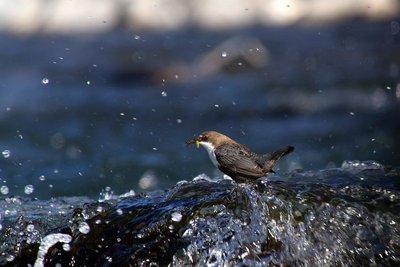
Cincle plongueur avec son repas dans le bec - Damien Combrisson - PNE  Fauna
FaunaWhite-throated dipper
The mountain streams relinquish their secrets to an attentive hiker. The master of this little world is a small brown, red and grey bird with a short tail and a pure white breast, separated from the darker abdomen by a light brown stripe. We can often see it in the air, flying close to the water to snap up insects. The dipper owes its name to its eating habits to find water larva, it dips its head into the water and grips the riverbed to walk against the current.
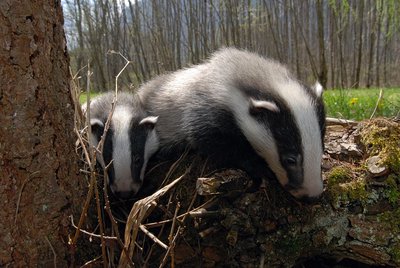
Deux jeunes blaireaux - PNE - Fiat Denis  Fauna
FaunaEuropean badger
You will often see a badger at nighttime on the edge of a path, a road or an embankment. The gentle pace and portly gait of this member of the mustelid family are reminiscent of a small bear you may get a glimpse of his black and the white stripes on his head before he hurries away. Worms, reptiles, frogs, fruit and plants are his staple diet. Families of badgers live in sometimes very extensive and very old burrows, with numerous chambers and galleries. They are tolerant animals, since they will sometimes share their home with rabbits and foxes. Badgers are among the unobtrusive neighbours whose presence goes undetected, except for their footprints made up of five nearly parallel toes and the tracks of their long claws.
Forecast
Altimetric profile
Sensitive areas
Golden eagle
- Impacted practices:
- Aerial, , Vertical
- Sensitivity periods:
- JanFebMarAprMayJunJulAug
- Contact:
- Parc National des Écrins
Julien Charron
julien.charron@ecrins-parcnational.fr
Recommandations
Before leaving a refuge, ask the warden for advice if you have any doubts at all.
The there-and-back route to the glacial lake is highly recommended, except in bad weather.
No shade before the Lac de la Douche; protect yourself from the sun.
Information desks
Information center "le Casset" (summer only)
Le Casset, 05220 Le Monêtier-les-bains
At the entrance of the hamlet of "le Casset" and near the core zone of the Park, a stop before or after your walk... Projections, documentation, books of the Park. Free admission. All animations of the Park are free unless otherwise stated.
Information center "Col du Lautaret" (summer only)
Col du Lautaret, 05220 Le Monêtier-les-bains
Under the gaze of the Meije (3983 m) and surrounded by beautiful meadows celebrated in the great names of botany, the former hospice of the Lautaret called "refuge Napoleon" houses the reception and information Park center - Projections, documentation, books of the Park. Accessible to people with reduced mobility. Free admission.
Source

Report a problem or an error
If you have found an error on this page or if you have noticed any problems during your hike, please report them to us here:


